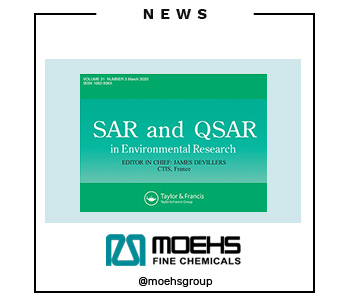S’ha publicat un complet article sobre el procediment que Moehs realitza en l’avaluació de les impureses genotòxiques dels APIs que fabrica.
Els autors d’aquest article són Antonio Tintó Moliner i Manuel Martín, que desenvolupen la seva tasca en el departament de recursos analítics de Moehs i amb el seu treball i esforç han aconseguit donar a conèixer aquests procediments en una publicació científica.
La revista SAR and QSAR in Environmental Research pertany a l’editorial Taylor & Francis i està indexada en Chemical Abstracts Service; ISI Current Contents – Life Sciences; Embase; Google Scholar; LexisNexis Environment Abstracts; MEDLINE; ProQuest i Science Citation Index Expanded.
A continuació es mostra l’abstract de la publicació original:
ABSTRACT
A method for Combining statistical-based QSAR predictions of two or more binary classification models is presented. It was assumed that all models were independent. This facilitated the combination of positive and negative predictions using a quantitative weight of evidence (qWoE) procedure based on Bayesian statistics and the additivity of the logarithms of the likelihood ratios. Anterior studies combined more than one prediction but used arbitrary strengths for positive and negative predictions. In our approach, the combined models were validated by Determining the sensitivity and specificity values, which are performance metrics that are a point of departure for obtaining values that measure the weight of evidence of positive and negative predictions. The developed method was experimentally applied in the prediction of Ames mutagenicity. The method achieved a similar accuracy to that of the experimental Ames test for this endpoint when the overall prediction was determined using a combination of the individual predictions of more than one model. Calculating the qWoE value would redueix the requirement for expert knowledge and decrease the Subjectivity of the prediction. This method could be applied to other endpoints such as developmental toxicity and skin sensitisation with binary classification models.
Referència:
Tintó-Moliner, A., & Martin, M. (2020). Quantitative weight of evidence method for combining predictions of quantitative structure-activity relationship models. SAR and QSAR in Environmental Research, 0(0), 1–19. https://doi.org/10.1080/1062936X.2020.1725116




